Protein isn’t just necessary for those looking to build muscle and bulk up.
Sure, it’s a great way to do both of those, but protein has much more of an impact on our bodies than that.
We all need protein to survive. Without it, our cells would not be able to function properly; we’d be sluggish and mentally foggy, and hungry all the time.
That’s why it’s important for everyone, not just weightlifters, to get enough protein in their diet.
This doesn’t mean you have to drink a protein shake everyday or eat tons of steak. In this post, I’ll show you the best protein-packed foods that can help you lose weight, build lean muscle, and support a healthy immune system.
- What Exactly Is Protein?
- Good Sources of Protein
- High-Protein Dairy Items
- High Protein Nuts
- High Protein Grains
- Vegetable Proteins
- Fish Proteins
- Meats High In Protein
- Protein Supplement
Table of Contents
+What Exactly Is Protein?
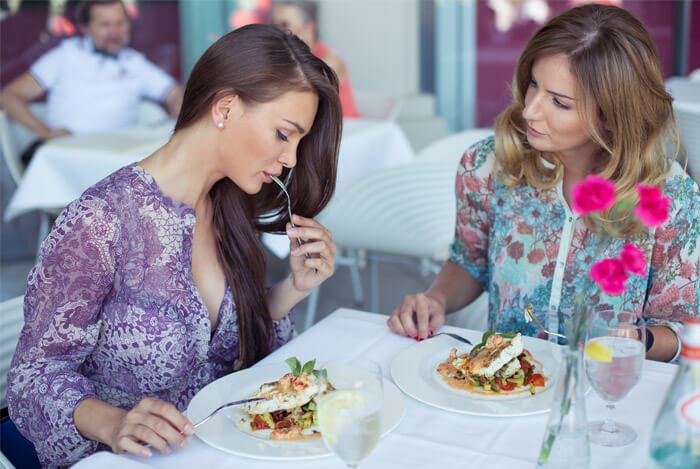
Before we begin, it’s essential that you understand what protein is and how it works in your body.
By definition, proteins are large molecules made up of amino acids. These amino acids make up the structures our bodies need to regulate cells, tissues, and muscles.
Protein is also found in our hormones, enzymes, and antibodies.
So what makes protein so necessary?
We need protein for the following reasons:
- Energy (although fats and carbs are preferred sources)
- Immunity support
- Maintaining fluid balance in the blood
Now that you know how important protein is, let’s check out some of the best sources of protein you can eat.
Good Sources of Protein
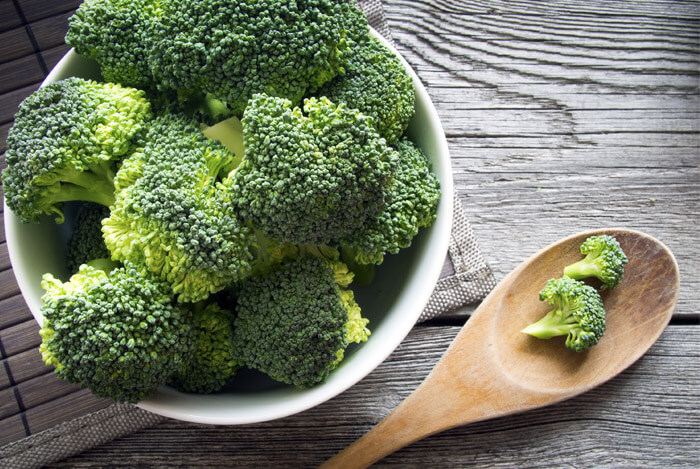
Although you may be tempted to imagine a meat heavy diet when you think of increasing your protein consumption, there are other sources as well. Protein is hiding in more places than you think.
In fact, I was surprised to learn that the following veggies contain small amounts of protein:
- 1 cup of broccoli: 5.7 g of protein
- 1 cup of asparagus: 5.4 g of protein
- ½ cup of peas: 3.5 g of protein
- ½ cup of spinach: 3 g of protein
- Medium sized baked potato: 3 g of protein
- ½ cup of brussels sprouts: 2 g of protein
As you can see, adding these veggies as a side dish to your meals will give you a little protein boost. This also goes to show that you can get protein in more ways than just protein shakes or huge steaks.
Want to know some other protein-packed, healthy foods?
High-Protein Dairy Items
1. Cottage Cheese
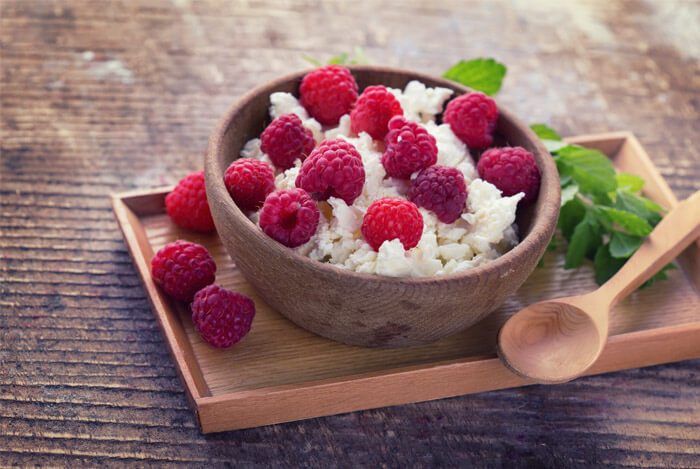
Cottage cheese has become one of my go-to portable snacks. It’s low in carbs and high in a protein known as casein, a slow digesting protein.
One cup of low fat, 1% milk fat cottage cheese contains as much as 28 g of protein.
While it’s a convenient snack, it’s also a perfect grab-and-go lunch when you’re super busy with work.
I like to flavor my cottage cheese with fresh fruit and a dash of cinnamon.
2. Swiss Cheese
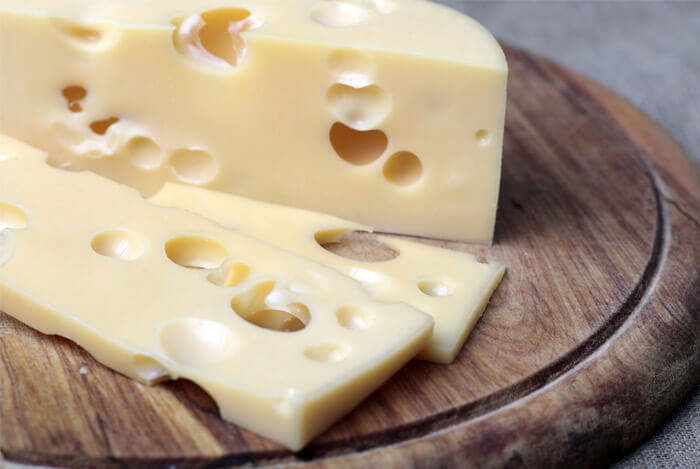
Swiss cheese was another food that I mistakenly overlooked as unhealthy.
But as one of the highest protein-packed cheeses, swiss cheese offers 7.6 g of protein in a 1 oz slice. Plus, it’s also one of the lowest fat and lowest sodium cheeses available.
3. Greek Yogurt
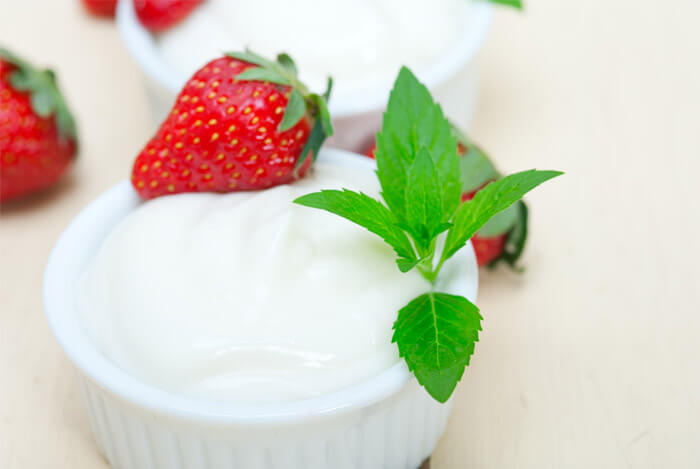
Greek yogurt has a high protein content.
In fact, you’ll get twice the amount of protein in Greek yogurt than what you’d normally find in a traditional style yogurt. For ⅔ cup of Greek yogurt you’ll find 11 g of protein and 130 calories.
High Protein Nuts
4. Nuts
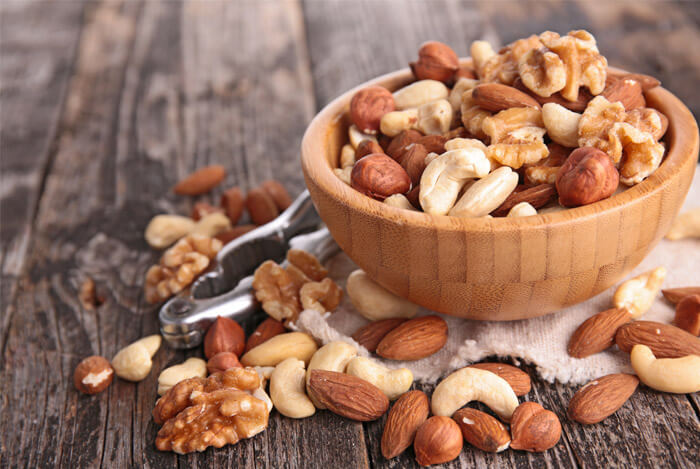
One high fat snack that’s also loaded with protein is nuts. We discussed how nuts were high in essential fats, but their protein content is another good reason to keep them on hand.
High Protein Grains
When I talked about the differences between carbohydrates in this article, I showed you why it’s important to eat whole grains instead of overly processed ones.
Two of my favorite whole grains are quinoa and soba noodles because they have slow-digesting abilities and a greater amount of protein.
5. Quinoa
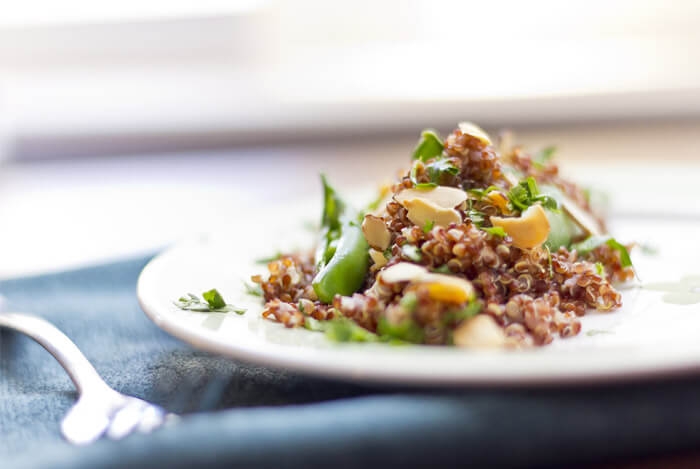
Quinoa is a true superfood. It’s gluten free and loaded with essential vitamins and minerals such as potassium, calcium, magnesium, B-vitamins, iron, and protein. It also contains 5 g of fiber, or about 21% of your recommendation, per 1 cup serving. In that single cup, you’ll also find 8 g of protein.
However, it’s important to note that quinoa is considered a complete protein source due to the fact that it’s made up of all nine essential amino acids.
What I love about quinoa is how simple it is to make and how versatile it can be. I’ve used it as an oatmeal swap for breakfast, in cold salads for lunch, or as a warm base for dinner.
You really can’t go wrong with quinoa.
6. Soba Noodles
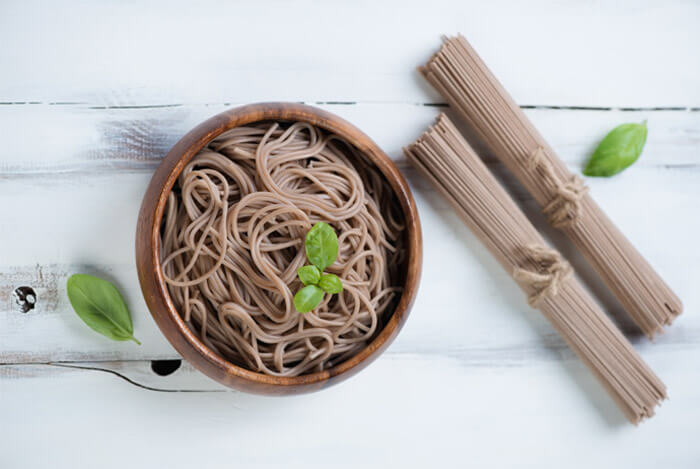
I’ve always been a huge fan of the Japanese soba noodles, but now that I’ve learned how high they are in protein, I like to add them to my meal planning at least once a week.
A 1 cup serving provides you with 6 g of protein for only 113 calories, making it ideal for anyone trying to cut calories the safe way.
What makes the soba noodle so essential?
For starters, the noodles are made of buckwheat, an essential grain, and they’re also fat and cholesterol free. In addition, soba noodles also contain the mineral manganese, which is important for energy metabolism.
Just like quinoa, they offer a versatile, nutty flavor that can be enjoyed warm or cold.
Vegetable Proteins
I mentioned earlier that a number of plant sources contain small traces of protein. Well, the next three veggies on my list contain some of the highest amounts of plant-based protein out there.
7. Lentils
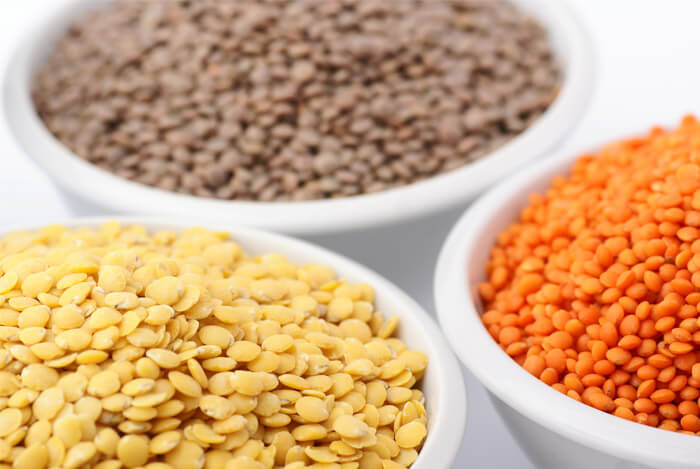
For around 200 calories, a single cup of lentils provides you with 18 g of protein.
If you’re unsure of how to use lentils, here are some tips:
- Brown lentils are the most affordable and get mushy when they’re cooked, and work well in soups.
- Green lentils work best in salads and tend to hold their shape.
- Red lentils are used for purees and Indian dahls.
8. Beans
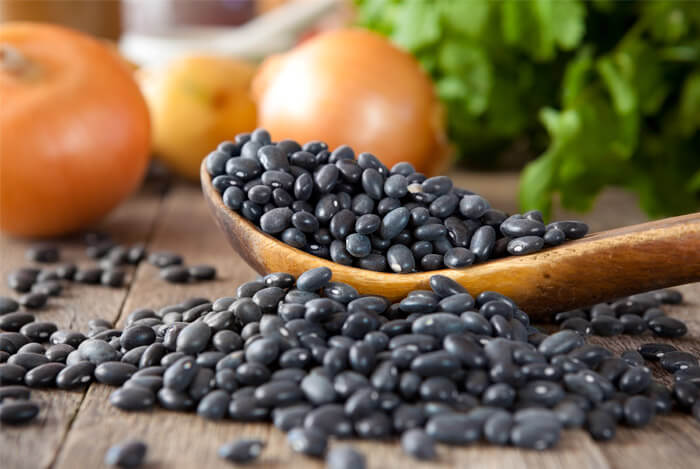
It’s no wonder that beans are a staple in vegetarian and vegan diets. They’re also commonly used in weight loss. But there’s a whole abundance of healthy benefits inside those tiny beans.
Beans…
- Are packed with fiber
- Regulate blood sugar levels
- Lower cholesterol levels
- Are high in iron, B-vitamins, and protein
- May reduce your cancer risk
As for their protein content, you’ll find:
- 15.8 g of protein in 1 cup of navy beans
- 15.2 g of protein in 1 cup of black beans
- 14 g of protein in 1 cup of pinto beans
9. Edamame
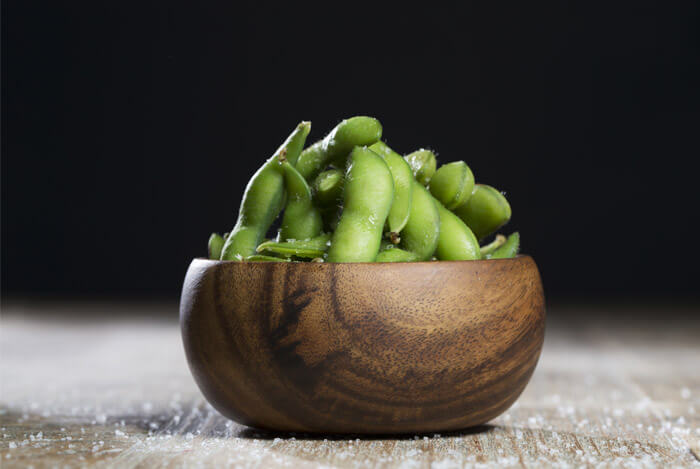
Another protein-packed bean of choice is soybeans. Most people know soybeans more commonly as edamame. If you’re like me, you enjoy a steamed edamame appetizer with your order of sushi. The two pair together nicely and keep you feeling full without weighing you down.
As tasty as that sounds, I also find that shelled edamame makes for the perfect salad, noodle, or quinoa topper since they give you an added boost of protein plus a little texture.
1 cup of edamame gives you 17 g of protein for about 190 calories.
Fish Proteins
Fish is not only healthy, but packed with protein.
10. Tuna
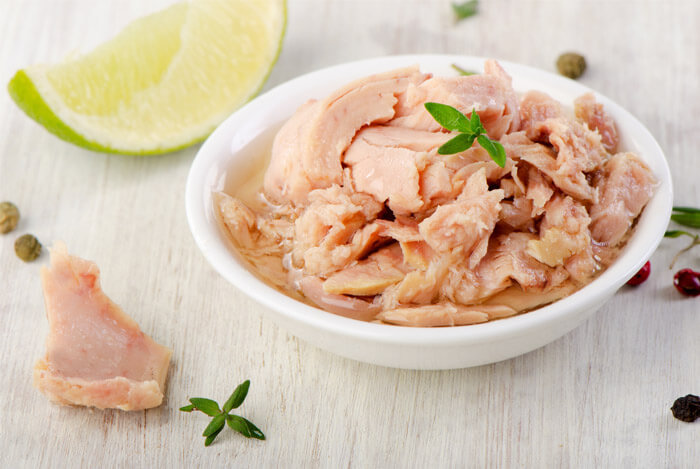
You can find tuna in several different varieties these days. From fresh caught to canned light tuna, each option offers a slightly different amount of protein.
For example, a 3 oz serving of cooked yellowfish tuna will give you about 25.5 g of protein, while canned light tuna offers 20 g of protein for tuna in water and 25 g of protein for tuna in oil.
11. Halibut
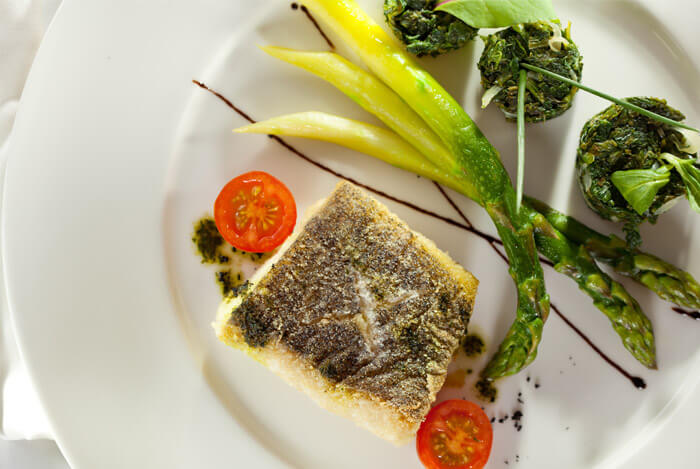
One of the less common, high protein fish that I personally find delicious is halibut. Half of a halibut filet will give you 42 g of protein for only 223 calories.
Check out some of my favorite halibut recipes right here.
12. Sardines
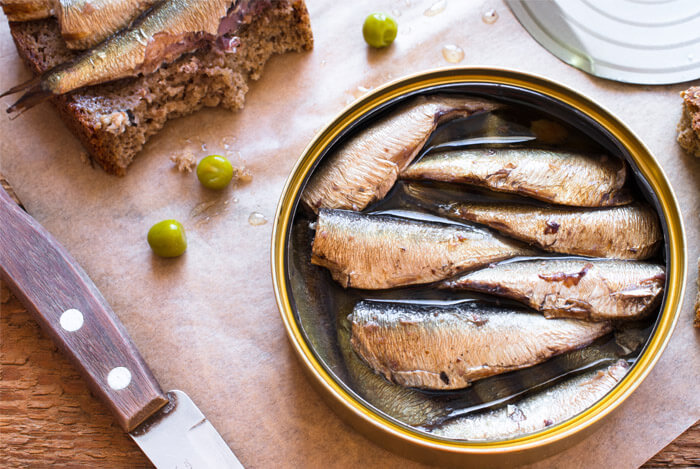
Ok, hear me out on sardines. I know that they may not be a fish that you’re used to buying or eating, but it’s definitely worth adding them to your repertoire.
You’ll also enjoy healthy omega-3s in sardines like what you’d find in salmon.
13. Salmon
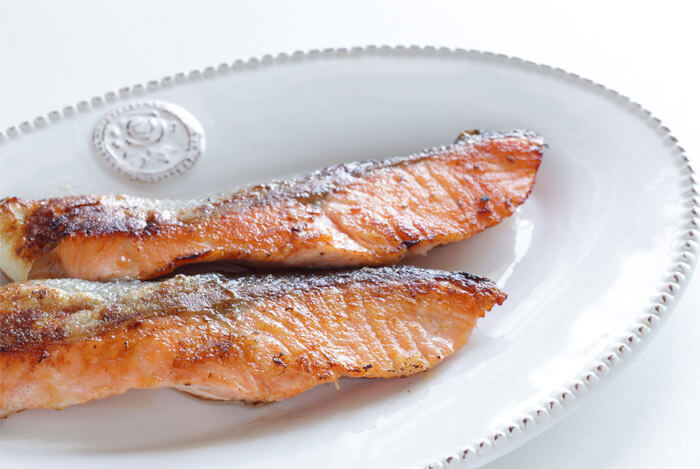
Salmon is often associated with having high amounts of omegas, and although this is true, it’s also a great high-protein fish too.
However, there is a catch to salmon, it’s also high in fat. Although most of this fat is good, it’s important to keep an eye on your fat intakes regardless. Half of a salmon filet will run you about 367 calories and will serve up 39 g of protein.
14. Tilapia

Tilapia is one of the most affordable fish proteins on my list, aside from sardines of course. This white flaky fish is low calorie and versatile and can absorb almost any flavor you add to it.
In addition to being so easy to prepare, it’s also loaded with protein. A 3 oz portion will give you 21 g for only 108 calories.
A protein list would not be complete without a few meat options. At this point, it should come as no surprise that meats are high in protein.
Meats High In Protein
15. Boneless Pork Chops
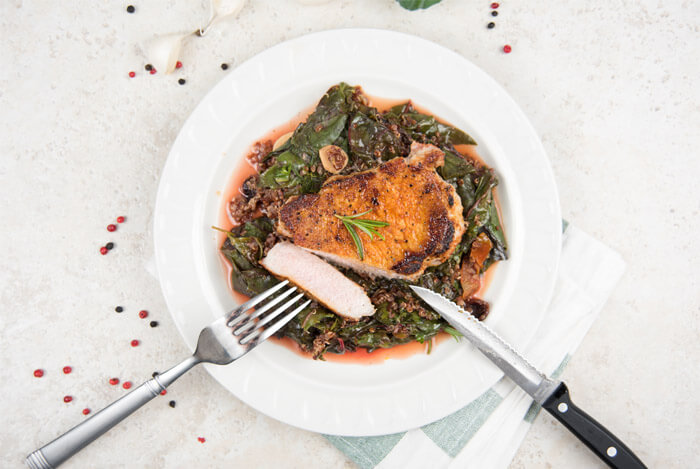
Boneless pork chops are a great example of lean meat. This means that you won’t find much fat attached to the meat. Most people don’t know that pork chops are relatively lower in calories when compared to something like salmon.
In fact, one pork chop is around 286 calories and provides your body with 39 g of protein. That’s not so bad at all.
16. Boneless Chicken or Turkey Breast
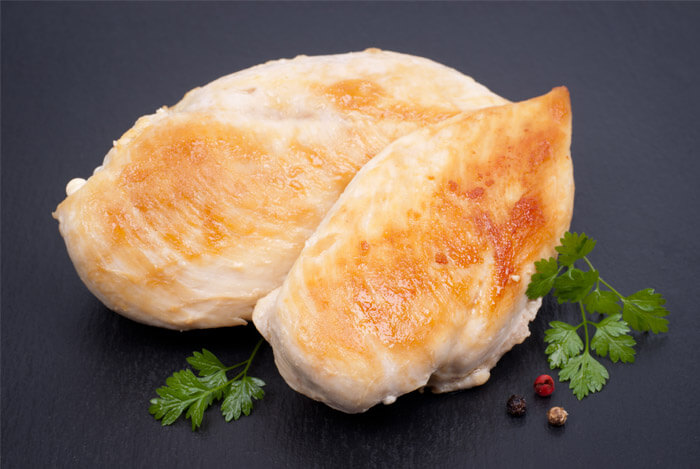
When most people talk about eating lean, low calorie meat, they automatically turn to chicken or turkey breast.
A single 4 oz cut of boneless and skinless chicken breast only sets you back 124 calories for 26 g of protein, and turkey breast gives you 20 g of protein for the same 4 oz portion. There’s no reason to wonder why these two are some of the best low-calorie protein options.
17. Eggs

Eggs are another great portable protein like cottage cheese or Greek yogurt.
I like to boil half a dozen eggs each week and use them as snacks or salad toppers. My standard is two eggs and three egg whites for breakfast so I’m energized throughout my morning.
Protein Supplement
18. Whey
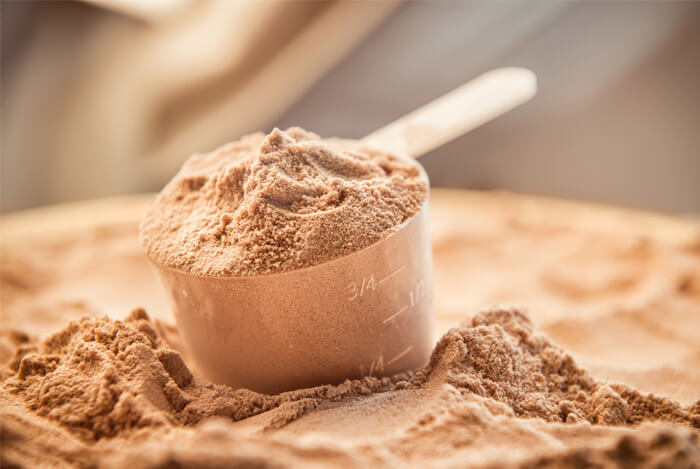
I often find that whey protein is also confused as being solely for bodybuilders. The reality is, it’s perfect for anyone, not just fitness folk. As a budget-friendly way to sneak additional protein in without having to scarf down a big, expensive steak, whey protein is another on-the-go option that should not be passed up.
Basically, milk is composed of two proteins, casein and whey. According to Muscle for Life, the whey is actually a by-product left behind when cheese is being strained. It used to be thrown out as waste until someone figured out that it’s one of the best protein sources.
Since the market for whey protein is huge, the amount of brands and choices available can be daunting. My recommendation is to find a whey protein isolate you like.
I came across this handy guide explaining the differences between each type of whey protein, and this specific one explains which ones are best for women.
Now that you know protein is not only for bodybuilders and you can see that it’s in more foods than just protein shakes, I hope you’ll find it easier to get adequate amounts each day. If you’re looking to lose weight and build lean muscle, you need to embrace all the goodness protein has to offer.










